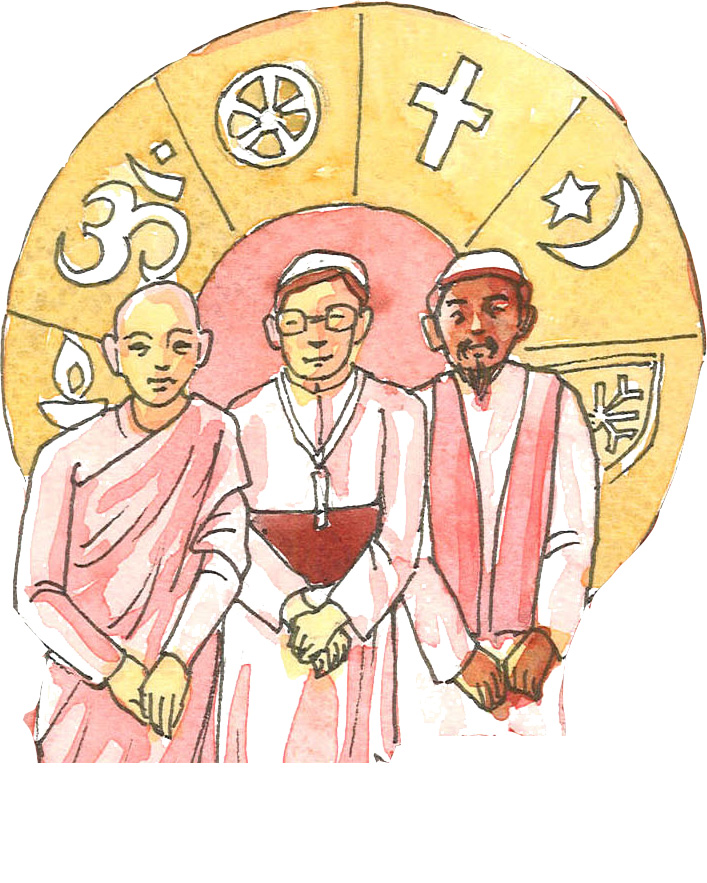There is no one universal definition of what a religious minority group is. In this learning resource, a religious minority is a group that self-identifies with a particular religion, or with a life philosophy which explains the meaning of life, ethics and morals, and has fewer members than the majority group. Religions are often related with belief in moral leaders or a superhuman power, especially in the form of gods, goddesses and spirits. Life philosophies often seek to explain truth and how people can lead their lives in accordance with that truth. Ethics and morals are related to ideas about what is ‘right’ and ‘wrong’ and ‘good’ and “bad” behaviour. People who follow the same religion or life philosophy often share similar practices, rules and symbols.

Sometimes religions and life philosophies are organised and practised as a group by its members. Within those groups there could be leaders who are perceived to have authority to interpret the religion or life philosophy for the other group members. Sometimes people also individually interpret their religions and life philosophies. Individual interpretations may differ from those of leaders. Within a group, individuals may have diverse and sometimes even contradictory interpretations.
Reflection/Discussion
- Do you have any religion or life philosophy? Which?
- Do you ever interpret your beliefs differently from a leader within your religion or life philosophy group?
- Do you ever interpret your beliefs differently from other group members?
Focus on Myanmar:
Religions by Numbers
Myanmar’s 2014 Population and Housing Census surveyed 50,279,900 persons living inside the country on the 29th of March 2014. Around 2.3% of the total population (1.2 million people) was not surveyed on this date, including 1,090,000 persons in Rakhine State, 69,753 in Kayin State and 46,600 in Kachin State.

The census results therefore include both statistics for all surveyed individuals as well as estimates for the non-surveyed individuals. The numbers of the non-surveyed individuals in Kayin State and Kachin State are not considered statistically significant to affect the proportions of the various religious groups at the Union or State level. However, the numbers of the non-surveyed individuals in Rakhine State is statistically significant. Persons in Rakhine State were not surveyed because they preferred to self-identify using an identity not recognised by the Myanmar government. The Ministry of Labour, Immigration and Population has assumed that these persons are mainly Muslims. The bar chart shows the results of the 2014 Population and Housing Census when including the assumptions of the 1.2 million non-surveyed individuals.
Reflection/Discussion
Some experts have proposed that respondents in the 2014 Census may not have wanted to self-identify with their actual religion. Why do you think respondents might not have stated their actual religion? How might this have affected the information in the survey?
အမျိုးသားရေးဝါဒီ
လှုပ်ရှားသွားလာနိုင်မှု
အမွေအနှစ်
ကိုလိုနီဝါဒ